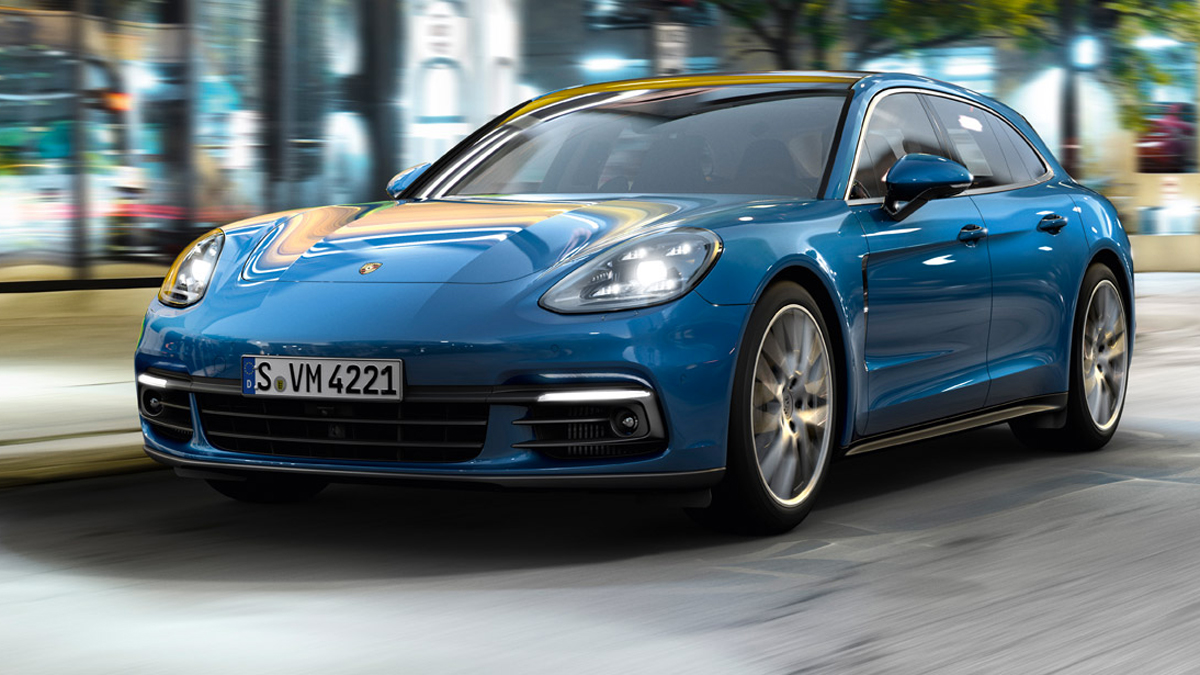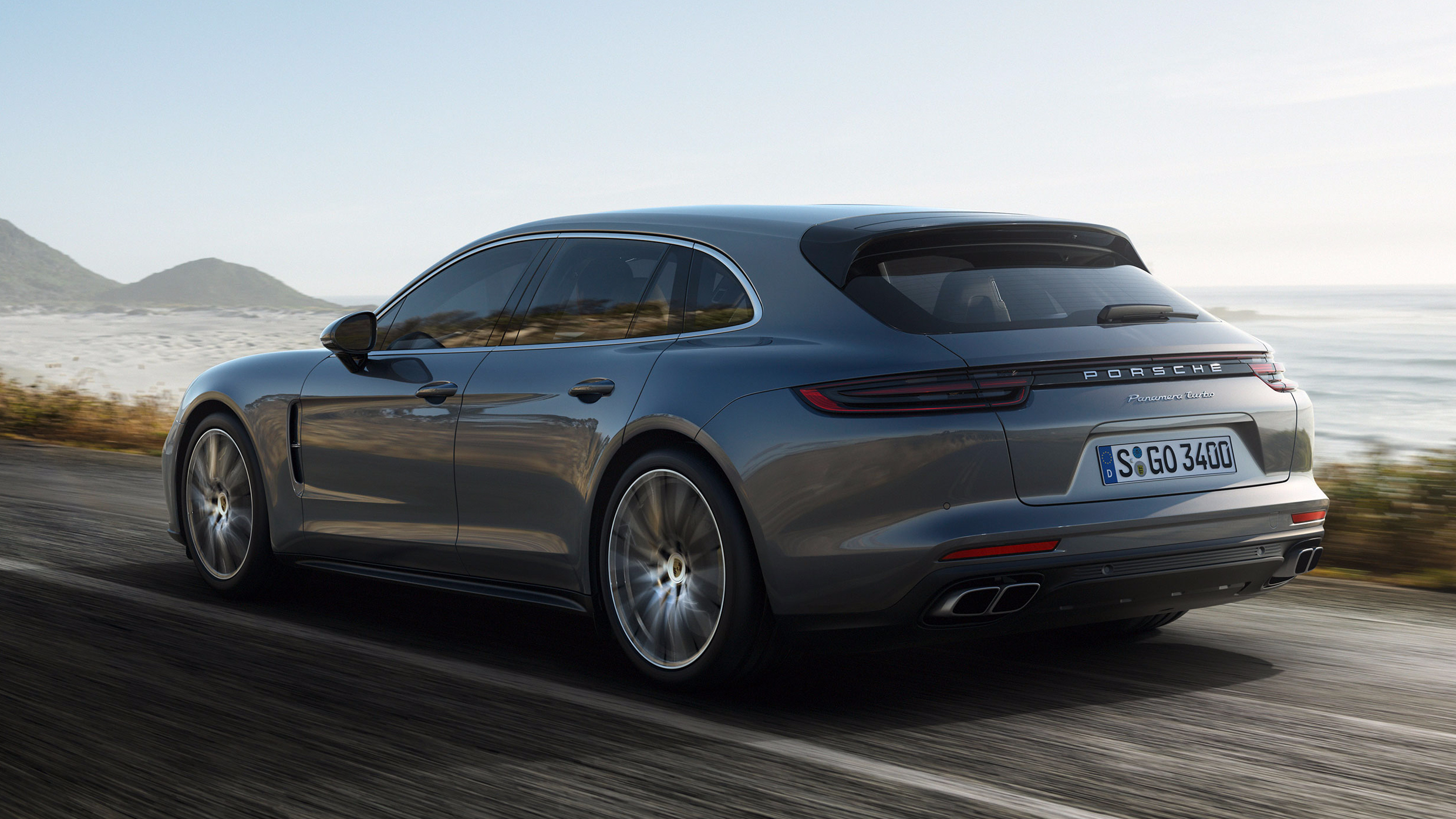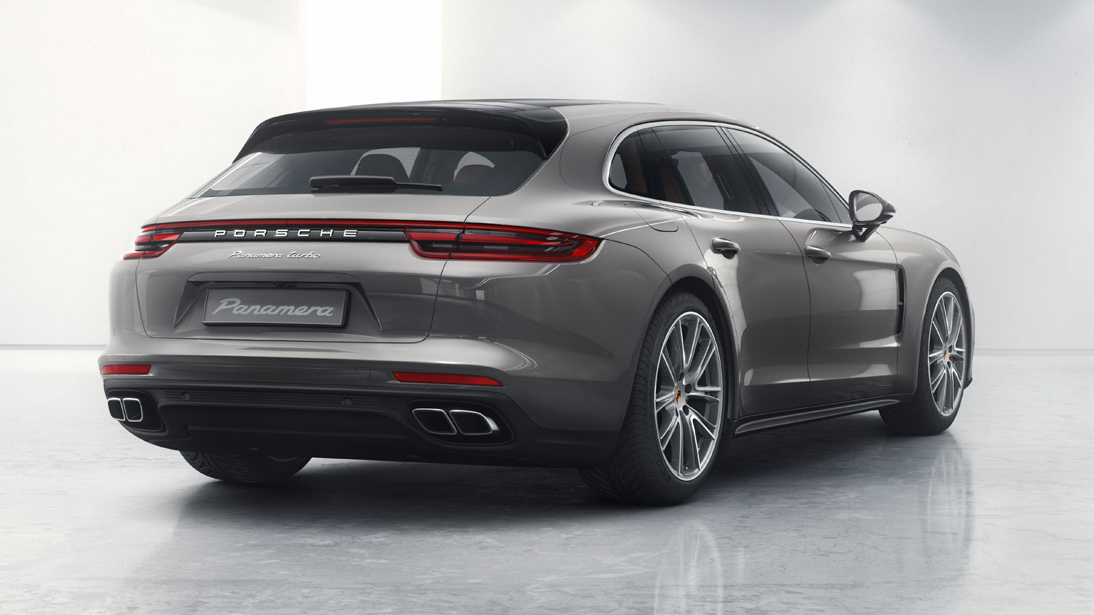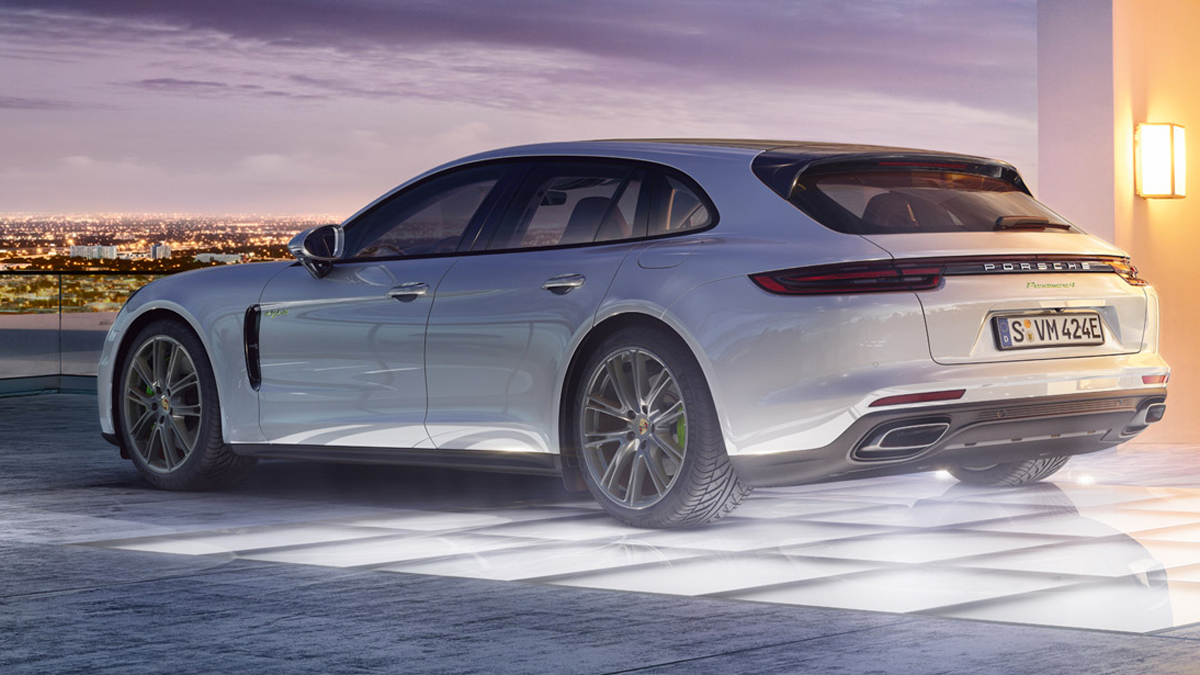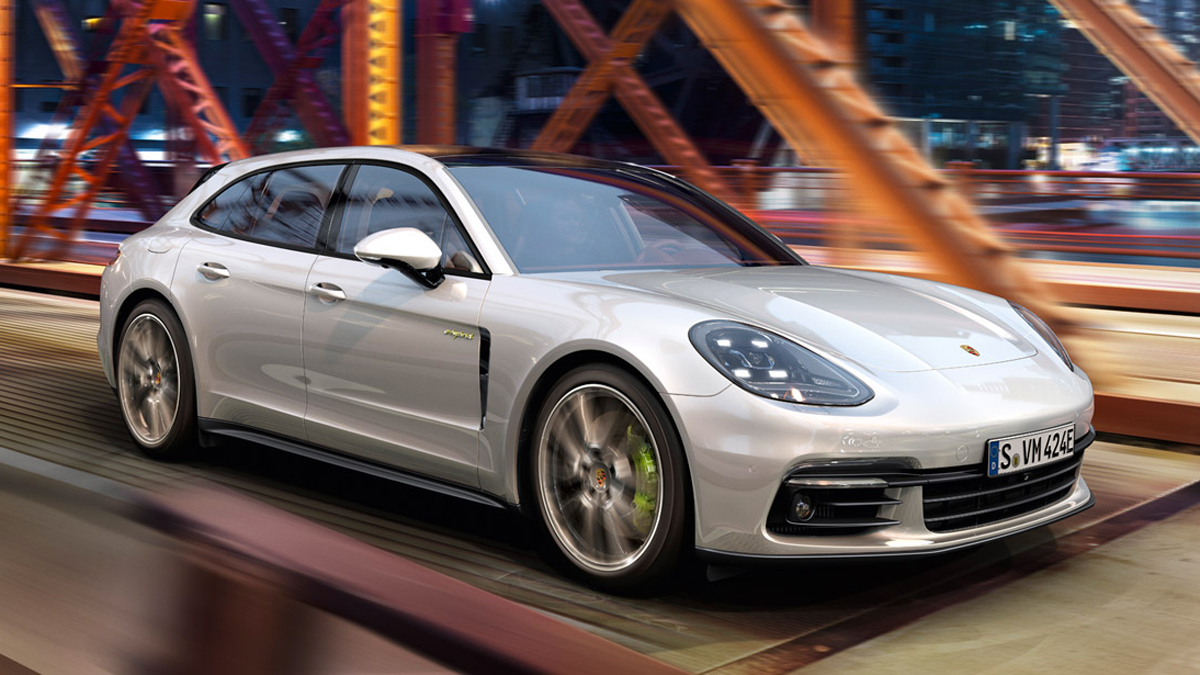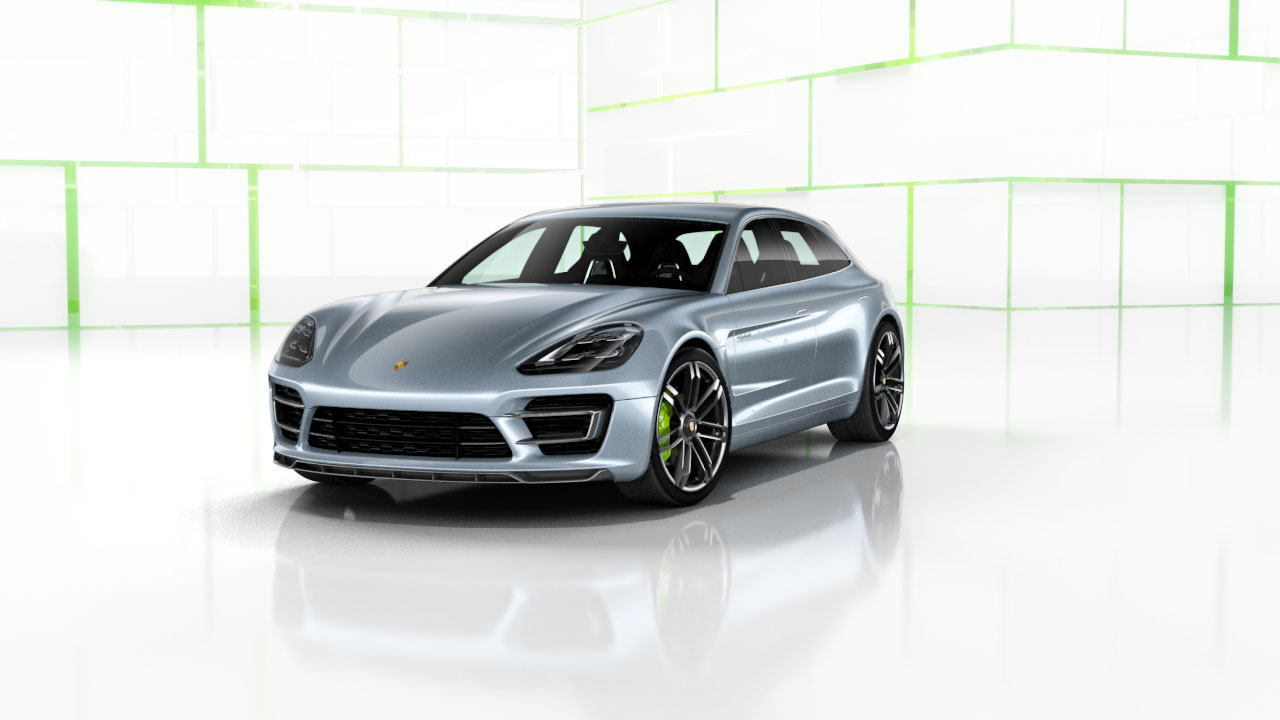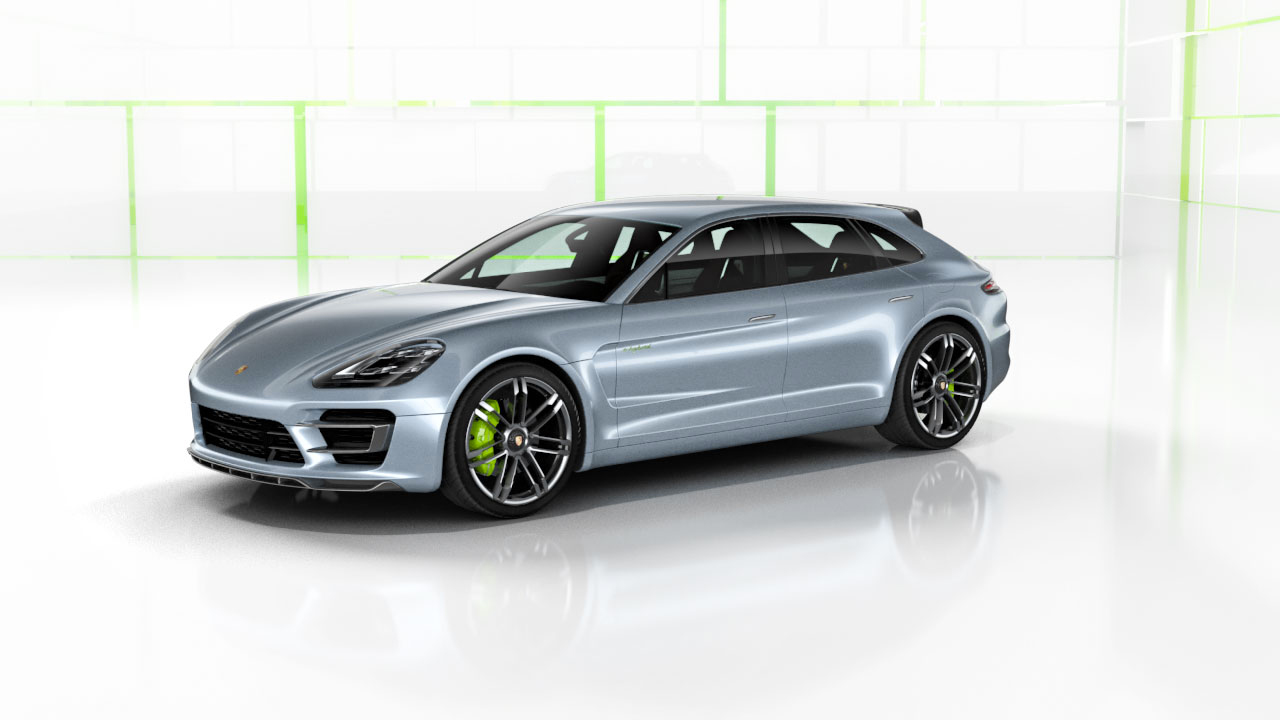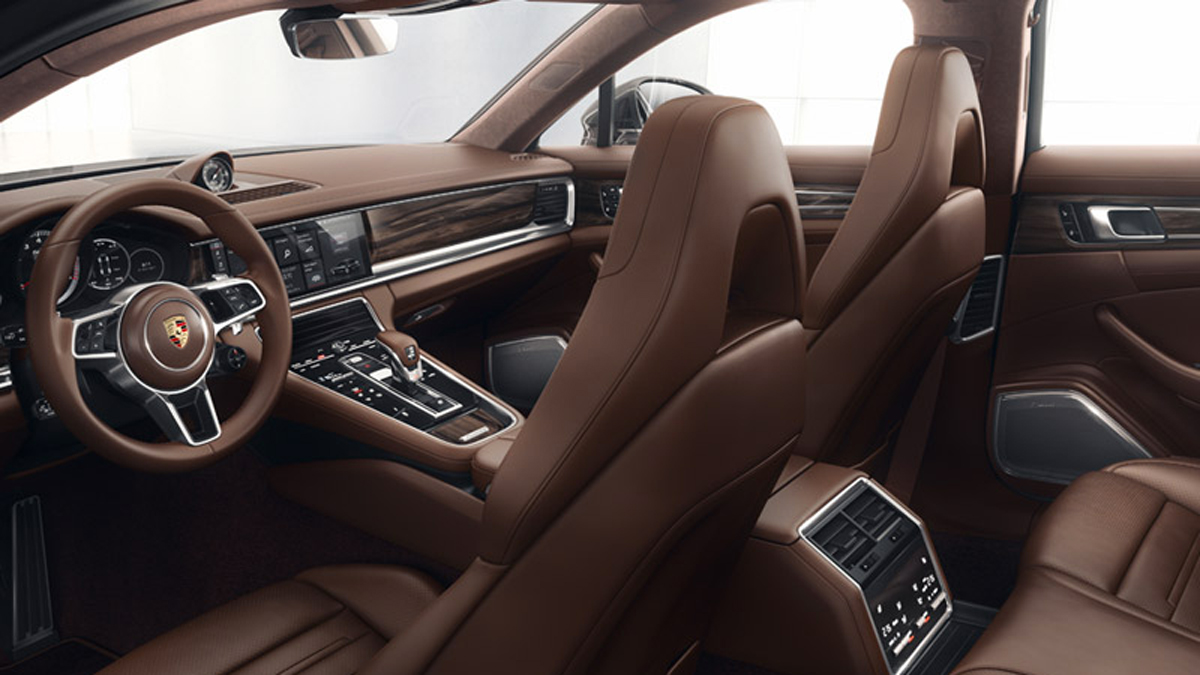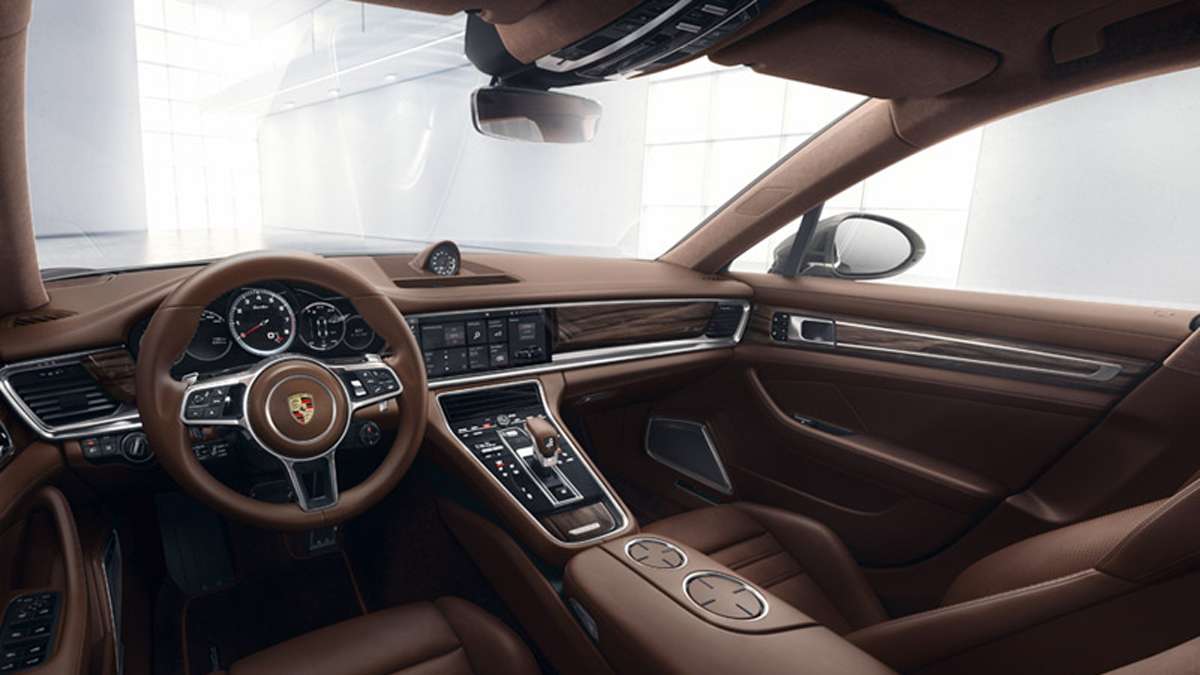Porsche has unveiled a new variant of the second-generation Panamera named Sport Turismo. At least five years in the making, the Sport Turismo is the German brand’s very first station wagon.
The Sport Turismo was previewed by an eponymous concept introduced during the 2012 edition of the Paris Auto Show. It’s all but identical to the Panamera sedan from the tip of the front bumper to the B-pillar. Beyond that point, the roof line stretches into a steep hatch that helps the Sport Turismo blur the line between a station wagon and a shooting brake.
A spoiler adds a sporty touch to the overall look, but it’s not just a mundane piece of plastic. It’s the world’s first adjustable roof spoiler, according to Porsche, and it generates up to 110 pounds of downforce on the rear axle. It also reduces wind noise when the panoramic sunroof is wide open.
The Sport Turismo offers space for five passengers — a first for the Panamera line — thanks to what designers refer to as a 4+1 seating configuration. In lieu of a bench, the second row is made up of two individual seats and a third, occasional-use seat in the middle. Alternatively, a 2+2 setup with power-adjustable rear seats is available. Trunk space checks in at 18.4 cubic feet with four (or five) passengers on board, and a generous 49 cubes with the rear seats folded flat.
Porsche is unique in the automotive industry because it developed SUVs before launching a station wagon; it’s usually the other way around. Designers applied lessons learned from the Cayenne and the Macan to make the Sport Turismo as versatile as it is fast. Notably, the cargo compartment is accessed via a large hatch that stretches will into the bumper, a feature that facilitates the task of loading and unloading bulky items like your 912 project car’s four-speed manual transmission. Buyers can pay extra for roof rails integrated into the trunk floor, a 230-volt outlet, and a luggage net.
The Sport Turismo is mechanically identical to the standard Panamera. The palette of engines includes a twin-turbocharged, 4.0-liter V8 that makes 550 horsepower at 5,750 rpm and 567 pound-feet of torque between 1,960 and 4,500 rpm. A twin-turbocharged 2.9-liter V6 and two gasoline-electric hybrid drivetrains — including a 680-horsepower one built around the aforementioned V8 — round out the lineup.
In the United States, wagons are declining in popularity and automakers are increasingly abandoning the segment. Porsche is bucking that trend, and it has confirmed the Sport Turismo will be sold on this side of the pond. The wagon will land in showrooms in Germany on October 7. Other markets — like China and the U.S. — will receive the first examples in early November.
